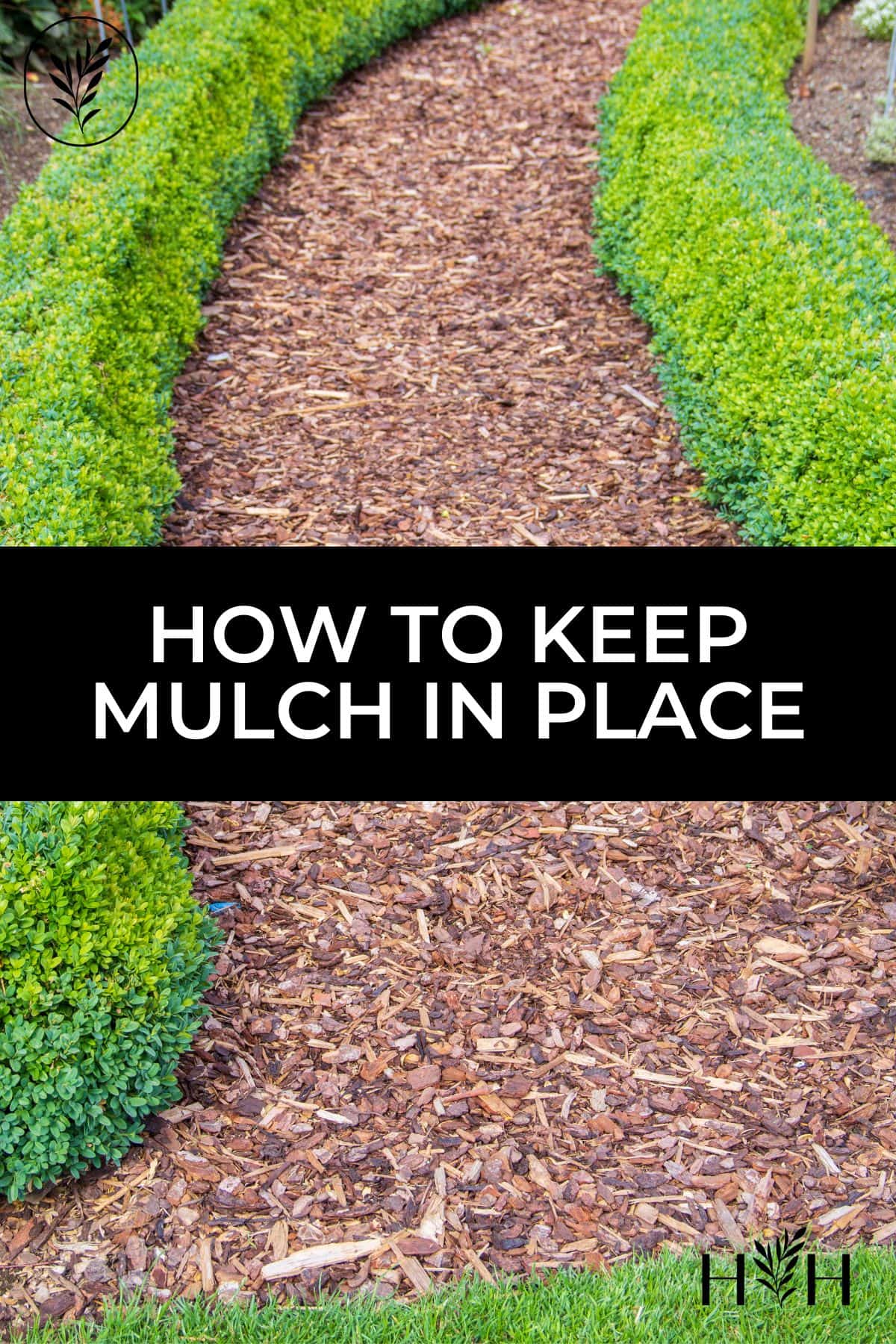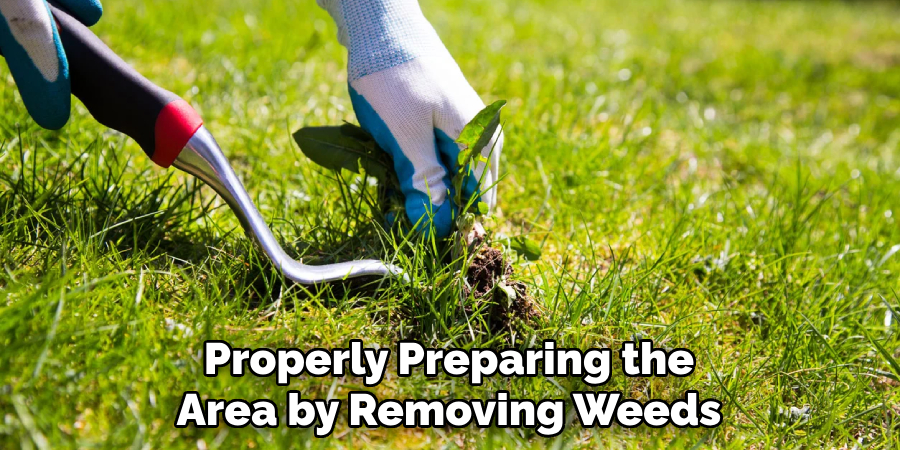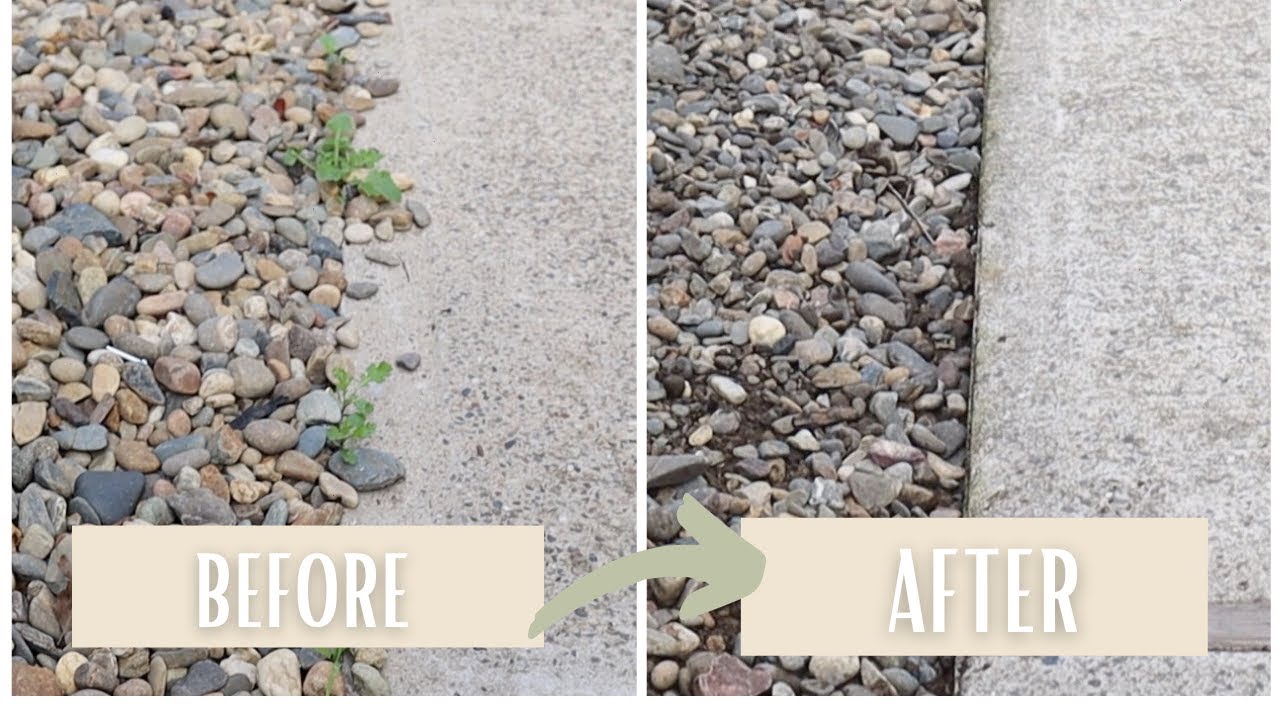To keep mulch in place, use landscape fabric or plastic sheeting as a base and secure it with anchor pins or stakes. Alternatively, opt for larger mulch particles or mulch mats, which naturally stay in place better.
Mulch is a popular choice for both aesthetically pleasing and functional landscaping. It helps to suppress weeds, retain moisture in the soil, regulate soil temperature, and prevent erosion. However, one common issue with mulch is keeping it in place. Wind, rain, and foot traffic can displace the mulch, causing it to scatter around the garden or flower beds.
Fortunately, there are several methods to prevent this from happening, ensuring that your mulch stays in place and serves its intended purpose effectively. We will explore some simple yet effective ways to keep mulch in place.

Credit: www.homefortheharvest.com
The Importance Of Mulch
Mulch is essential for maintaining soil moisture, regulating temperature, and preventing erosion. It acts as a protective layer, preventing water evaporation and keeping soil moist. Mulch also acts as a thermal insulator, regulating soil temperature and protecting plants from extreme hot or cold.
It helps prevent soil compaction, allowing better absorption of water and nutrients. Mulching reduces weed growth by blocking sunlight and competition for nutrients. Organic mulch also improves soil structure, fertility, and microbial activity. In addition, it prevents soil erosion by reducing the impact of heavy rain and preventing surface runoff.
Overall, mulching provides numerous benefits for plants, soil, and the environment by conserving water, promoting healthy plant growth, and reducing the need for chemical fertilizers. So, it’s important to keep mulch in place to avail these benefits.
How to Keep Mulch in Place: Step by Step Guide
Choosing The Right Mulch
Choosing the right mulch is essential for keeping it in place. Factors to consider when selecting mulch include the type of material, such as straw or wood chips. Different types of mulching materials have their advantages and disadvantages. Organic mulch, like compost or bark, has the benefit of improving soil quality and moisture retention.
However, it may attract pests or harbor weed seeds. Inorganic mulch, such as gravel or plastic, offers durability but lacks nutrients for the soil. It’s important to understand the pros and cons of each type before making a decision. To keep your mulch in place, consider using landscape fabric, edging, or regular maintenance like raking.
By selecting the right mulch and taking necessary precautions, you can maintain a beautiful and effective mulching system for your garden.
Preparing The Area For Mulching
Preparing the area for mulching starts with clearing debris and weeds, ensuring a clean surface. Level the soil for a smooth base. Apply weed barrier or landscape fabric as a preventive measure against unwanted growth.
Techniques To Keep Mulch In Place
To keep mulch in place, there are various techniques you can employ. One effective method is installing landscape edging, which will help secure the mulch. Natural borders, such as plants or bushes, can also be used to contain the mulch and prevent it from spreading.
Another option is to secure the mulch with rocks or bricks, creating a barrier that keeps it in place. These edging options not only serve a practical purpose but also add aesthetic appeal to your garden or landscape. Ensuring that the mulch remains in place will not only keep your garden looking neat and tidy but also minimize maintenance by reducing the need for frequent reapplication.
Maintaining Mulch Coverage
Maintaining mulch coverage is crucial to prevent erosion and keep it in place. Mulch raking and fluffing techniques help distribute the mulch evenly. By regularly refreshing the mulch layer, you can improve its appearance and effectiveness in retaining moisture. To maintain reader engagement, it’s important to vary the phrases used at the beginning of paragraphs, avoiding repetitive terms.
Adhering to these guidelines will ensure your content is seo friendly, unique, and easy to understand. Remember to write in an active voice and avoid commonly overused words and phrases. Implementing these strategies will help you create compelling and engaging blog posts on how to keep mulch in place.
Troubleshooting Common Mulch Issues
Mulch is essential for maintaining healthy plants, but it can sometimes be tricky to keep in place. If you’re experiencing discoloration, try using natural dyes or colorants to restore its appearance. To address weed growth, consider using a weed barrier or regularly pulling weeds by hand.
Preventing mold and fungal growth can be achieved by ensuring proper drainage and avoiding excessive watering. Regularly turning and fluffing the mulch can also help minimize these issues. By following these simple tips, you can maintain the beauty and functionality of your mulch beds without any hassle.
Sustainable Practices For Mulch Management
Mulch is an essential component in maintaining healthy gardens and landscapes. To keep mulch in place, consider sustainable practices for mulch management. One environmentally friendly tip is mulch recycling and reusing options. Rather than discarding mulch, you can repurpose it for different areas in your garden.
Composting mulch is another option for future use. By creating a compost pile, you can break down the mulch into nutrient-rich compost that benefits your plants. These practices not only prevent waste but also promote a more sustainable approach to gardening.
With these simple steps, you can ensure that your mulch stays in place while being environmentally friendly.
Frequently Asked Questions On How To Keep Mulch In Place
How Can I Keep Mulch In Place?
To keep mulch in place, first ensure the area is weed-free. Then, apply a layer of mulch that is at least 3 inches thick. Use landscape fabric or plastic edging to define the edges and prevent spreading. Water the mulch regularly to prevent it from blowing away or washing out.
Consider using a mulch stabilizer for extra protection against wind and rain.
What Is The Best Type Of Mulch To Use?
The best type of mulch will depend on your specific needs. Organic mulches like wood chips, straw, and bark provide nutrients to the soil as they break down. Inorganic mulches like rubber or stones are more durable and require less maintenance.
Consider factors such as cost, appearance, and the specific needs of your plants before choosing a mulch.
How Often Should I Replenish My Mulch?
Mulch should be replenished once a year or as needed. Over time, mulch breaks down and decomposes, losing its effectiveness. Remove any debris or weeds before adding a fresh layer of mulch. Regularly check the depth of the mulch and add more as necessary to maintain a thickness of 2-4 inches.
Conclusion
Keeping mulch in place is crucial to maintaining the overall health and appearance of your garden or landscaping. By following these simple tips, you can ensure that your mulch stays put and continues to provide its many benefits. Firstly, properly preparing the area by removing weeds and debris will create a clean and sturdy foundation for the mulch.

Secondly, choosing the right type of mulch for your specific needs and ensuring proper installation will contribute to its longevity. Next, regularly checking and replenishing the mulch as needed will help to retain moisture and suppress weed growth. Additionally, using edging or borders can create a physical barrier to keep the mulch contained.
Lastly, practicing proper maintenance, such as not overwatering and avoiding heavy foot traffic, will also contribute to the longevity and effectiveness of your mulch. Following these guidelines will help to keep your mulch in place, ensuring a beautiful and thriving garden or landscaping.

